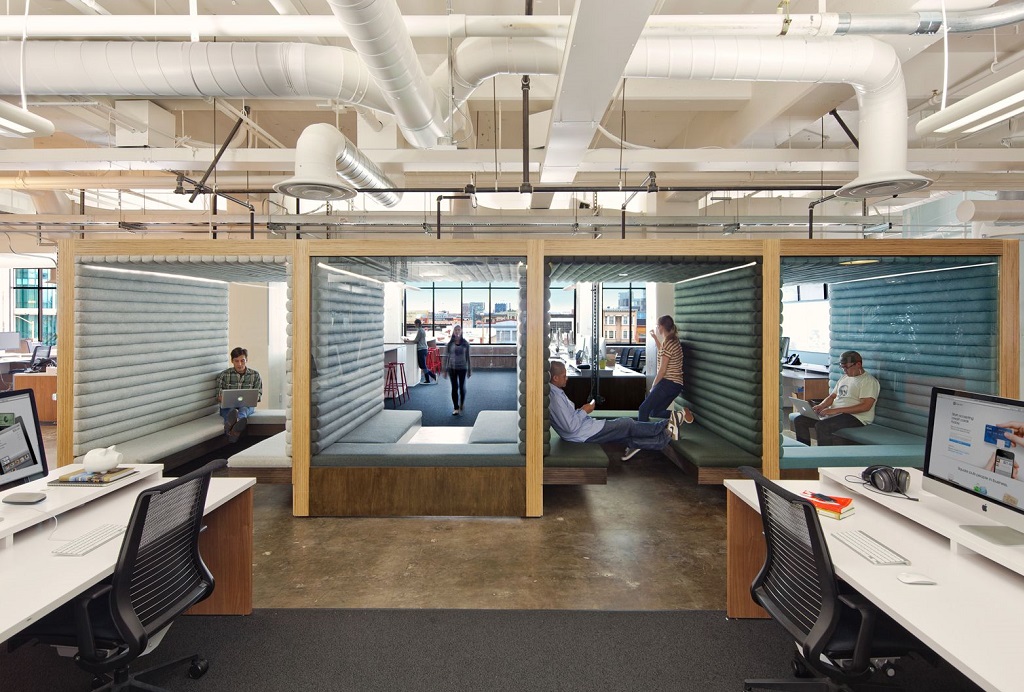The world of work is ever changing: People are increasingly driven by flexibility and purpose. The places we work are becoming more important than ever, people desire autonomy to carry out their work where it suits them best. And finally, the functionality of the workplace is being brought into question as technology continues to advance at a rapid pace – influencing the way we work.
And it’s these three pillars (People, Place & Technology) that — when aligned properly — will optimise employee experience, which is vital not just for talent retention and wellbeing, but also for running a smooth workplace in general. In fact, Gallup research shows a good company culture and highly engaged employees can lead to a 41% reduction in absenteeism and a 17% increase in productivity.
Put simply, businesses need to understand that improving performance in general relies on boosting the employee experience. So how can organisations set up places and technology to support and change with flexible demands?
The challenges of coming together
It’s no wonder that every company right now is assessing their approach to both people and place. The war for talent and the Great Resignation means a seamless experience wherever people work is important as ever. Enabling
flexible working and work/life balance is crucial. Businesses need the tools to support this so talent can be retained and attraction improved.
In terms of place, companies now manage teams in distributed geographies and locations. Before, the physical workplace had a monopoly —employees felt they had no choice but to come into the office. But now, we must tie into the flexibility of employees. Yes, remote working has become integral to the working world, but there is still value in bringing people together in person – especially when it comes to collaboration, purpose and culture. Spaces must represent a worthwhile experience and suit the needs of the workforce for this to be acknowledged.
It’s clear employee demands are constantly changing, so technology has to be agile enough to keep up. Organisations need to put the right digital tools in place to create a complete experience and provide the data to adapt to requirements.
Using technology to optimise employee experience
Technology can be the thread between these three pillars that allows employee experience to be seamless and enables businesses to become what I like to call ‘employee experience organisations’. It’s something we have achieved here at ServiceNow.
Our
Workplace Service Delivery (WSD) software allowed us to glean data from our reservation tool, visitor management solution and work order management to begin to see how our spaces were being used. Now, we can look at how many people are going in and make decisions from real time information on how employees use different types of spaces through the workplace app.
In tandem with our badging data, it begins to show how our spaces will adapt to future working positions and enable us to carry out New Ways of Working pilots in different locations. We can test our plans and see whether these changes add value to the experience and productivity of our workforce.
Importantly, access to this performance data from our software allows us to adopt intentional design across our offices. No longer can you sit still and not adapt your spaces to create valuable experiences. Among organisations that create intentional places for high-level collaboration,
75% also report having high levels of team innovation. Access to informed, real-time data from WSD enables us to act accordingly and reap the rewards of productivity.
What this also means is we can implement intuitive technology that understands how to best meet the needs of employees. Namely, the Now Mobile app is designed to ensure they have the optimal experience.
As the vast majority of our employee base have been remote working since the pandemic, it can be hard to know what space is best for them. The app will be looking at different categories such ‘focus’ and ‘collaboration’ that recommends places based on purpose.
Being presented with the right environment is much more effective than having to search for it. Think of Spotify for example – ‘I want concentration music’ – the
Now Mobile app works the same way. It removes hurdles so that employees can maximise productivity.
For example, when selecting collaboration, the app can show you other people in your team that have also booked into your office and will propose spaces near them. It’s another feature that aids better teamwork and purpose, with intentional options to provide a valuable experience and once again enhance productivity.
The future of the working world
Ultimately, a person should have the freedom of choice when it comes to the way they work, which has a direct influence on both place and technology. Aligning a vision between people, place and technology will have a positive impact on productivity and collaboration. That’s what has enabled ServiceNow to be an employee experience organisation.
Going forward for us, it’s about continuing to collect and build data sets for each of these pillars with agile technology to support everchanging employee demands. Always making sure people can work at their best and thrive will enable a business to do the same.
By using our technology internally to support the future of work, we can understand how it translates to helping our customers to become employee experience organisations.
Article written by
By Lewis Barker, Director of Workplace Services EMEA at ServiceNow
